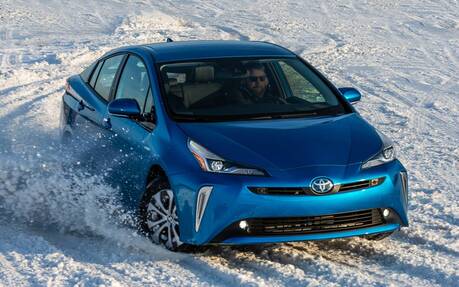The Prius' All-Wheel Drive System: How Does It Work?
Looking for a pre-owned vehicle with good fuel economy? One of the best choices available to you is certainly the Toyota Prius. You probably know it by reputation, but you might not be familiar with all its features.
One that’s likely to please many Quebec drivers is the all-wheel drive system. Yes, since model year 2019, the popular Japanese hybrid is available with it.
- Also: Toyota Teases "Hybrid Reborn," Hints at Next-Gen Prius
- Also: 2023 Toyota Prius Redesigned to Shine Even Brighter
That being said, it’s different from most other systems on the market. Named “AWD-e”, this peculiar system has no centre differential, no power split system and no rear/front drive shaft. Why? Because it’s electric.
As a matter of fact, the Prius AWD-e uses a magnet-free electric motor that drives the rear wheels from 0 to 10 km/h, and when necessary, up to 70 km/h. This system provides power to the rear wheels when accelerating from a stop. In other words, it’s a traction complement that mainly shows its utility in an urban context, when getting out of a snowbank for example.

If the conditions do not require all-wheel drive, the system automatically switches to FWD to lower fuel consumption. By the way, the Prius AWD-e boasts a fuel consumption of 4.5 L/100 km in the city and 4.9 L/100 km on the highway, compared to 4.4 and 4.6 L/100 km for the front wheel drive Prius.
Another difference is the battery; the Prius AWD-e is fitted with the nickel metal-hydrid type while others use a Lithium-ion battery. Compact and designed to offer excellent cold-temperature performance, it’s nested in the same spot, under the back seat.
When doing a test drive, try it on a slippery road if you get the chance. With its slightly enhanced driveability, the Prius AWD-e might be worth it, especially since the price difference with a comparable traction Prius is relatively low.
